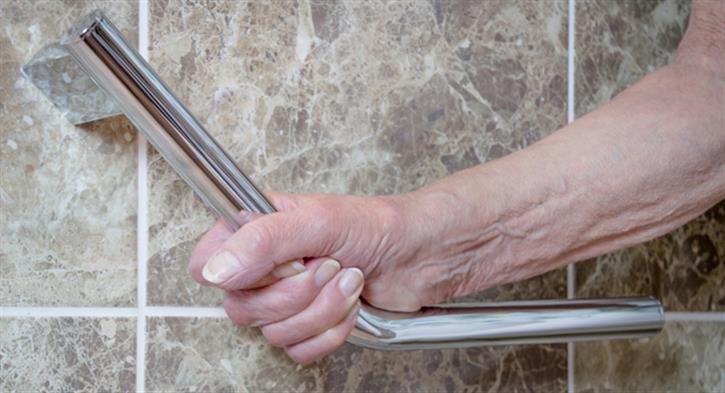

James Dadd looks at some of the key considerations when designing and installing bathrooms that are safe and comfortable for users with arthritis.
Arthritis is the biggest cause of pain and disability in the UK, according to statistics from Arthritis Research UK. It affects people of all ages and approximately 20% of the general public consults a GP about the musculoskeletal condition each year.
The nation is already home to an astonishing 10 million people with some form of arthritis, however the problem looks set to grow as the population continues to age rapidly and activity levels decline significantly – two of the main risk factors associated with the disease.
What does this mean for installers?
Some experts are going so far as to warn of an imminent arthritis epidemic and, as a result, the demand for adaptations in the home, particularly in the bathroom, is expected to increase dramatically to promote independent living for people of all ages and abilities.
Indeed, the results of an accessible housing survey published in June this year revealed that more than one million people across the UK are planning to install some accessible features in their homes in the coming years.
It is easy to see that there are tangible business benefits to be had for plumbers and installers – the key to grasping these opportunities is knowing how to create appropriate spaces that meet the diverse needs of those with arthritis. The best way to go about this is to call on proven design guidelines while evaluating each element of the traditional bathroom setup.
What makes a bathroom arthritis-friendly?
Mobility aids
Devices that aid mobility, such as grab rails and bars, are a critical element of inclusive bathroom design. They should be installed alongside baths, toilets, washbasins, and in and around shower areas.
These need to be strong enough for the job and must have been tested extensively to support high loads. Typically, up to 100kg is adequate.
Those manufactured from high quality uPVC are a good idea as they are hygienic and easy to clean.
It is worth considering models with a fluted surface, such as those in AKW’s 1400 series, to provide additional grip.
Washing areas
Walk in baths are an option, but they can be costly so it depends on the budget of the project.
Level access wet rooms are a more cost effective alternative that remove any trip hazards for users and make the most of the space in a bathroom. These are quick and easy to install with a high quality, watertight wet room former.
When selecting a shower it is important to consider if those with limited dexterity could use the device easily. Models with large, simple buttons for controlling temperature and flow are ideal.
Toilets and washbasins
Raised toilet seats are recommended to make it easier for users to get on and off the toilet.
Levers are usually the easiest toilet flush mechanism to use for those with arthritis as a firm grim is not needed.
Similarly, lever basin taps are best as they can be operated smoothly with either a hand or an arm without grip to overcome dexterity issues.
These principles will help to create a welcoming and safe bathroom that encourages independent living for people with arthritis.
Nevertheless, it is essential to remember there is not a one size fits all solution for all users with musculoskeletal complaints and it is vital to asses each individuals’ needs in order to design the optimum space.
Equally, it is important to know that specialist advice is out there from adaptation experts, such as AKW, who can offer tailored guidance for each project being worked on for the best result.
James Dadd is marketing director at AKW
If you'd like to keep up-to-date with the latest developments in the heating and plumbing industry, why not subscribe to our weekly newsletters? Just click the button below and you can ensure all the latest industry news and new product information lands in your inbox every week.